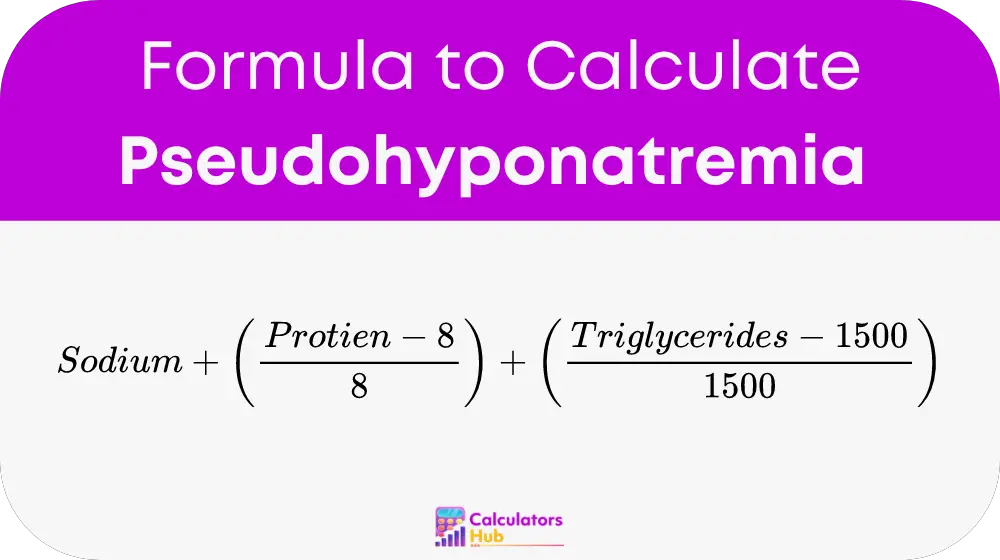The Pseudohyponatremia Calculator is a tool designed to correct the measured serum sodium concentration in patients with high levels of lipids or proteins in their blood. It is essential in clinical settings where accurate sodium levels are crucial for patient care. By inputting the measured sodium, total protein, and triglycerides levels, the calculator provides a corrected sodium value, helping to avoid the risks associated with misdiagnosis and improper treatment.
Formula of Pseudohyponatremia Calculator
Pseudohyponatremia is a condition where the measured serum sodium concentration is falsely low due to high levels of lipids or proteins in the blood. The formula to correct the sodium level is:

where:
- Measured Sodium is the sodium concentration measured in the laboratory.
- Total Protein is the total protein level in the blood (in g/dL).
- Triglycerides is the level of triglycerides in the blood (in mg/dL).
General Terms Table
| Measured Sodium (mEq/L) | Total Protein (g/dL) | Triglycerides (mg/dL) | Corrected Sodium (mEq/L) |
|---|---|---|---|
| 130 | 9 | 1600 | 130.13 |
| 135 | 10 | 1700 | 135.25 |
| 140 | 11 | 1800 | 140.38 |
| 145 | 12 | 1900 | 145.50 |
This table provides corrected sodium values for common combinations of measured sodium, total protein, and triglycerides levels.
Example of Pseudohyponatremia Calculator
Let's go through an example to understand how the Pseudohyponatremia Calculator works.
Suppose a patient has the following lab results:
- Measured Sodium: 130 mEq/L
- Total Protein: 10 g/dL
- Triglycerides: 1600 mg/dL
Using the formula:
Corrected Sodium = 130 + ((10 - 8) / 8) + ((1600 - 1500) / 1500) = 130 + (2 / 8) + (100 / 1500) = 130 + 0.25 + 0.0667 = 130.3167
So, the corrected sodium level is approximately 130.32 mEq/L.
Common FAQs
Pseudohyponatremia is a condition where the measured serum sodium concentration is falsely low due to the presence of high levels of lipids or proteins in the blood.
Accurate sodium levels are crucial for diagnosing and treating various health conditions. Incorrect sodium levels can lead to misdiagnosis and improper treatment, which can have serious health consequences.
The calculator adjusts the measured sodium levels based on total protein and triglycerides levels, providing a more accurate sodium concentration. This helps healthcare providers make better-informed decisions about patient care.